Join More Than 50,000+ Subscribers and get latest camera news and rumors
NEW CAMERA VIDEOS ON YOUTUBE
|
By admin, on March 20th, 2025
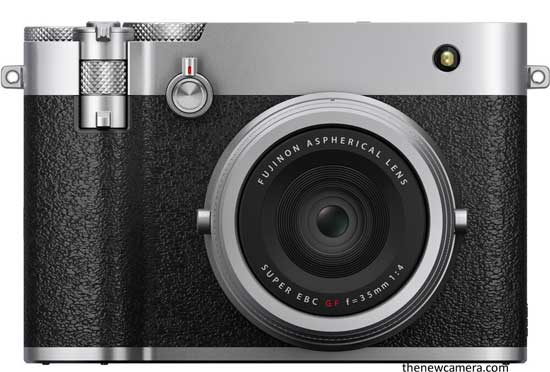
RF means rangefinder. Announced finally, it is a compact medium format camera. For the first time, Fuji has created a very unique medium format compact camera that never existed before. So let’s explore the set of specifications that impressed us and have a technical specification overview amount of this camera.
Get GFX100 RF from B&H Store | Adorama.com
Things I liked about the Fuji GFX100 RF Camera
1. High-Resolution Sensor
A high-resolution sensor is the key factor here. The 102-megapixel medium format sensor is a significant or a major upgrade for any photographer who loves to have high-quality compacts in their hands. Although it is not so compact that it can easily fit in your jacket pocket too, yeah, in terms of medium format cameras, it is very much compact, similar to a full-frame camera design-wise.
2. Rangefinder-Style Body & Unique Features
The rangefinder-style body also includes an offset electronic viewfinder and the most attractive thing in the body design is the new aspect ratio dial with 9 options that include 4:3, 2:2, and even 16:9. This allows you to compose your images in a very different way, making landscape and architectural photography more intuitive.
This aspect ratio dial will give you a new dimension to capture and preserve your compositions. You can check our best aspect ratio guide to understand how different ratios impact composition.
3. Ideal for Professional Photography
This camera is highly beneficial for studio photography, landscape photographers, architecture photographers, and anyone who loves to extract the maximum dynamic range possible on the go. This is the best camera.
4. Versatile Fixed Lens
The GFX 100 RF camera uses a 28mm F4 lens, which is equivalent to a 35mm lens in terms of a full-frame camera. It provides a wide-angle perspective specifically ideal for landscape shooters, and architecture photographers, and it can do wonders with street photography. The lens is one of the other notable advantages that allow sync flash up to 1/2000 of a second, technically up to 1/4000s.
5. Built-in ND Filter
The other biggest thing that impressed me is the convenient built-in ND filter. The four-level built-in ND filter practically enables you to capture long exposure shots even in bright light conditions without additionally putting filters over the lens. So again, if you are a landscape photographer, architecture photographer, or even portrait shooter, this will help you a lot in composing your shot and extracting maximum dynamic range over the sensor.
6. Film Simulation Mode
How can we forget Film Simulation Mode if we are talking about a Fuji camera? Even in the medium format camera, we will have 14 Film Simulation options that photographers can select. Any of these, and straight out of the camera, you will have an amazing, enhancing post-processing experience with these Film Simulation modes.
7. Crop and Zoom Functionality
The unexpected detail you are getting from a medium format sensor. Although we have a fixed lens over the sensor since it’s a high-resolution camera, the GFX 100 RF offers multiple crop ratios that include 35mm, 45mm, 63mm, and 80mm. So if you are using the maximum zoom, the resulting output will be 20 megapixels, starting from 62MP at 35mm. And when you are using the camera at 28mm, you will be getting the full 102 megapixels. So it is a very practical thing and helpful too for composing your shots.
8. Hybrid Autofocus System
Apart from being a medium format camera, the camera uses a hybrid autofocus system that ensures fast as well as accurate focusing over the subject.
9. Connectivity and Storage
The camera features dual UHS-II SD card slots and external SSD support. So you can connect with your SSD drive to quickly empty your camera using the SD card slot, or even you can use an SSD drive to capture images while connecting your camera with a USB-C port. The camera also features a headphone and microphone port, a micro-HDMI port that enables tethering for hybrid shooters.
Now, those features that failed to impress me
1. Unconventional Viewfinder Placement
Since it’s an RF (rangefinder-style) camera, I was expecting some sort of Fuji X-Pro-style hybrid OVF-EVF mix in this camera. At the same time, the placement of the EVF is not in the center, which may affect someone who has a habit of using DSLRs or high-end mirrorless cameras for a long time. It’s all about compatibility, and if you are new to this, then there is no issue.
2. No IBIS
Since we are getting a slow fixed lens of 28mm F4 which will act as a 35mm F5.6 lens when used in Fullframe eq, those who will by the GFX 100 RF compact camera and interested in low-light or street photography will surely miss the presence of IBIS without a doubt
3. Conditional Weather Sealing
Conditional weather sealing means the weather sealing is effective only and only when you are using the included filter ring and filters over the top of the camera. If you are not using the filter ring and the filters, then this camera may get damaged due to rain or moist weather. So always keep in mind the conditional weather sealing part if you are willing to use this camera outdoors.
4. Limited Video Capabilities
This is completely an optional thing. So I hoped and expected that those who are buying the medium format GFX 100 RF camera are basically photographers. But still, we are paying a lot of money, and if you look at the video capability of the camera, then we have 4K video at 30 frames per second, which may disappoint some people.
5. Display
Now, we have a 3.2-inch tilting touchscreen display. While it is fully functional, some users may consider it small since we are using a large medium format body. If the camera makers were able to add a larger display—similar to the conventional ones we usually see in DSLRs—it would have been a very helpful thing.
Price & Availability
The price of the camera is approximately $5000. But we cannot say it’s a high-priced camera since its competitors—other medium format camera makers—are making even more expensive solutions. So we are not in the position to say it’s overpriced.
.The battery (16Wh NP-W235) is rated for 820 shots (CIPA), which is decent
The Fujifilm GFX100RF is a fixed-lens medium format camera with a 102MP sensor, retailing at $4899 and available since April 24, 2024. Below is a table summarizing its core features:
Fuji GFX 100 RF Full Specification
| Feature |
Details |
| Sensor |
102MP medium format (44 x 33 mm) Bayer sensor |
| Lens |
Fixed 35mm (28mm equiv) F4, leaf shutter, 10 elements in 8 groups, 9-blade aperture, minimum focus 20cm, accepts 49mm filters with adapter ring, syncs with flashes up to 1/2000s (technically 1/4000s) |
| Viewfinder |
5.76M dot OLED EVF, top left corner, 0.84x magnification |
| Weather Sealing |
Possible with included filter ring and filter |
| Autofocus |
Subject recognition autofocus |
| Aspect Ratio Dial |
9 options (4:3, 3:2, 16:9, 65:24, 17:6, 3:4, 1:1, 7:6, 5:4), preview via black borders, bounding box, or opacity, “C” setting for custom, Raw + JPEG for post-crop adjustment |
| Crop Zoom |
Toggle switch for crops: 35mm (62MP), 45mm (1.29x, 62MP), 63mm (1.81x, 31MP), 80mm (2.28x, 20MP) equiv., all in full-frame terms, Raw unaffected, in-camera reprocessing available |
| Screen |
3.2″ tilting rear touchscreen |
| Video |
4K up to 30fps |
| Built-in ND Filter |
4EV |
| Film Simulations |
14 options |
| Design |
Fixed lens, classic styling, no rangefinder or hybrid viewfinder, includes braided strap, filter ring, filter, color-matched square lens hood, available in black or black and silver |
| Battery |
16Wh NP-W235, rated for 820 shots (CIPA) |
| Storage |
2x UHS-II SD card slots, external SSD support |
Fuji GFX 100 RF Press Release
Introducing FUJIFILM GFX100RF: The first FUJIFILM GFX System Fixed-Lens Mirrorless Digital Camera
VALHALLA, N.Y., March 20, 2025 — FUJIFILM North America Corporation today announced the launch of its “FUJIFILM GFX100RF” (GFX100RF) mirrorless digital camera. GFX100RF is the first digital camera with a fixed lens in the history of the GFX System. Like all GFX System cameras, GFX100RF incorporates a large-format image sensor1, approximately 1.7 times larger than a typical 35mm full-frame sensor.
“GFX100RF redefines portability for the GFX System,” said Victor Ha, vice president, Electronic Imaging and Optical Devices Divisions, FUJIFILM North America Corporation. “This camera is an incredible mashup between our Straight Out of Camera philosophy and GFX System’s More Than Full FrameTM persona because it bridges image quality with our legendary color reproduction. With GFX100RF, we’re able to offer high-resolution, large format images in a small, easy-to-carry package.”
Product Features
Large-format, high-resolution images from the lightest GFX System model to date
- GFX100RF weighs just 1.62lb (735g)2, making it the lightest model in the history of any GFX System camera.
- The camera features Fujifilm’s GFX 102MP CMOS II HS image sensor and image processing engine, X-Processor 5. This sensor features evolved pixel structure and micro- lenses that enhances dynamic range and low-light performance, as well as providing further improvements in peripheral image quality and autofocus (AF) accuracy.
Form and function made for large-format creation
- The top plate of GFX100RF is machined from a single block of aluminum and the lens ring, dials, bottom plate, and other details are all precision-machined from aluminum as well, accentuating the camera’s premium details.
- Another first in Fujifilm camera technology – an Aspect Ratio Dial is included on the back of the camera. This allows users to easily switch between the various aspect ratios on the camera, further enhancing the experience of using the camera. Two new aspect ratios of “3:4” and “17:6” have been added to GFX100RF, giving photographers more opportunities to select an aspect ratio that matches their creative intentions.
- GFX100RF also features a digital tele-converter selector/lever on the front of the camera to select angle of view. From its native 35mm focal length (28mm in 35mm format), the angle of view can be switched in three steps to 45mm (36mm in 35mm format), 63mm (50mm in 35mm format), and 80mm (63mm in 35mm format), allowing users to respond flexibly to a variety of image creation situations.
- A new user interface has been added that optimizes the placement of icons to match the 3:2 aspect ratio of the new 3.15-inch 2.1-megapixel 2-axis tilt LCD monitor.
- GFX100RF also features a new Surround View function that displays the area outside the image range as a semi-transparent frame, which serves as a guide that coincides with the selected aspect ratio. Users can easily switch between these two viewing modes by using a lever on the camera body, giving an experience that can suit the needs of different creative perspectives.
The latest fixed-lens technology
- GFX100RF features a new FUJINON 35mmF4 fixed focal length lens, with a constant F4 aperture, developed exclusively for GFX100RF. By adopting a leaf shutter system instead of a focal plane shutter system, the back focus distance has been shortened to achieve a significant reduction in overall size.
- The versatile 35mm (equivalent to 28mm on a 35mm camera) angle of view is ideal for a wide range of scenes, including landscapes, travel, snapshots, and portraits.
- GFX100RF achieves high resolution performance by suppressing spherical aberration and field curvature, through a lens configuration of 10 elements in 8 groups, including 2 aspherical lenses. A newly developed nano-GI coating optimized for lenses with large curvature has been applied to the lens to suppress internal reflections even in the peripheral areas of the lens.
- Despite its MORE THAN FULL FRAME™ large format imaging sensor, the compact and lightweight body allows users to get close to their subjects, as close as 7.9 inches (20 cm) from the front of the lens.
- GFX100RF is the first camera in the GFX System to feature a 4-stop ND filter built in, useful for image creation at maximum aperture in bright environments or with slow shutter speeds. The leaf shutter allows flash photography regardless of shutter speed, increasing the flexibility of shutter speeds, even when creating content outdoors in daylight.
High-speed, high-precision AF and 4K/30P video recording
- GFX100RF is equipped with an AF prediction function and face/eye AF to recognize a wide variety of subjects, such as animals, vehicles, birds, and airplanes. In video recording, the tracking AF function easily tracks the subject with touch operation.
- GFX100RF is equipped with a high-magnification, high-definition EVF with a finder magnification of 0.84x and 5.76 million dots. When using the viewfinder, it suppresses the image flow and distortion that occur due to misalignment of the pupil position, achieving high visibility. Inspired by classic camera design beloved by photographers, the GFX100RF’s EVF gives a premium viewing experience, echoing the style of FUJIFILM X100VI and FUJIFILM GFX50R, making it easy to monitor the surroundings with the camera to the eye.
- GFX100RF supports smooth 4K/30P 4:2:2 10-bit video recording at 30 frames per second. In addition to enabling content creation with a wide dynamic range and low noise, the 13+stop3 “F-Log2” provides for higher flexibility in post-production.
- GFX100RF is compatible with Frame.io Camera to Cloud functionality, allowing video and still image files to be uploaded directly to Frame.io via the cloud, dramatically speeding up the workflow from content creation to editing.
Included Accessories:
- The PRF-49 protective filter is included with purchase. When used in combination with the dedicated adapter ring, it achieves dust and drip resistance, making it safe to use even in outdoor environments where it may be exposed to light rain or flying dust.
- GFX100RF also includes a precision-machined aluminum lens hood and a dedicated adapter ring, combining a sophisticated design with light shielding properties.
- A stylish rope-type shoulder strap is included, a first for the GFX System, complementing the camera’s sophisticated design.
Pricing and Availability:
FUJIFILM GFX100RF is expected to be available late April 2025 at a Manufacturer’s Suggested Retail Price of $4,899.95 USD and $6,999 CAD.
By admin, on February 4th, 2025

Upcoming Camera and Lenses at CP+ Show 2025 -Take a look at the list of upcoming cameras and lenses at the CP+ show
1. Sigma Lenses
Sigma unique Zoom Lens Announcement
SIGMA Will be releasing a new, never-before-seen zoom lens. In December, we got some strong hints during an interview with the Sigma CEO on a SIGMA UK channel. He hinted that they are working on a telephoto zoom lens that has never existed. [Sigma is About to Announce a TELEPHOTO Lens that has NEVER Existed Before]
2. SONY NEW LENSES
Possibly three new lenses from Sony on CP+ event 2025
Sony 16mm f/1.8 G
Sony 400-800mm f/6.3-8.0 G
Sony FE 50-105mm f/2.8 G
Although the long-awaited Sony A7V is expected to arrive in Q1 of 2025
3. Olympus OM-3 and Lenses
Olympus in CP+ SHOW 2025 – Coming with three New Lenses and a new OM camera
New Olympus OM-3 camera
– Same 20MP sensor
– Metal body
– Price around $1500
– Rumored to be officially announced at CP+ in February 2025
– Various color profiles for video, similar to Fujifilm’s simulations
– Based on the OM-1
New lenses: 17mm f/1.8 and 25mm f/1.8, 100-400mm
4. Panasonic S1R Mk II
Panasonic S1R II Camera – This will be announced before the CP+ show, but Panasonic will also showcase it at the even alongside the other S-Line of cameras. The camera will share the same core specifications we have already seen in the Leica SL3 camera. That means it will carry forward the same 60-megapixel BSI CMOS sensor and 8K video capabilities. Full specification below
- 60MP Full-Frame BSI CMOS Sensor
- Hybrid AF System with PDAF & Contrast AF
- 5-Axis Sensor-Shift Image Stabilization
- 5.76m-Dot 0.78x-Mag. EyeRes OLED EVF
- 3.2″ 2.3m-Dot Tilting Touchscreen LCD
- 8K, C8K, 4K, C4K & FHD 10-Bit Recording
- ProRes 1080p & Apple MFi Support
- CFexpress Type B & SD UHS-II Card Slots
5. Canon V1 Camera
The Canon V1 compact camera is also expected to arrive in the month of FEB, take a look at the rumored specification of the camera
- 24MP CMOS Sensor (approx)
- 16-50mm (35mm Equivalent)
- 3″ Screen (Approx 1 million pixels)
- The screen has a 170° viewing angle
- 4K Video (Very slight crop, but likely for aspect ratio)
- 1.4X Crop Mode for Stills
- RAW, C-RAW, Dual Pixel RAW
- H.265 / HEVC
- C-Log3 / HDR PQ
- Launch: Late Q1/Early Q2 2025
6. Nikon Nikkor Z 35mm f/1.2
Nikon is about to announce the Z35mm F1.2 Lens in the next few days, and will be showcased during the CP+ show too.
Follow us on our social pages FACEBOOK | TWITTER | INSTAGRAM, If you have time –>see more Camera News
By admin, on January 6th, 2025
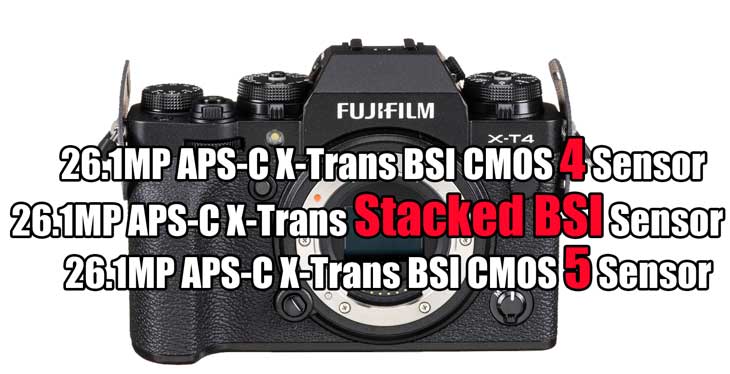
According to the latest rumors surfaced over the web, Fujifilm is working on a 26.1MP APS-C X-Trans BSI CMOS 5 Sensor. Although they do have a 26-megapixel stacked X-Trans sensor in their flagship Fuji X-H2S model, the upcoming sensor is non-stacked with excellent video core specification of 5th-generation design, being developed to be used in upcoming entry-level and mid-tier cameras with outstanding video performance.
take a look what source shared here –
Fujifilm may announce the X-Trans CMOS 5 image sensor for the next generation of mid-range video cameras (such as XS), which is basically an evolution of the speed and focus of the X-Trans CMOS 4.
The PDAF density reaches the X-Trans CMOS 5th generation standard, and the video reading speed reaches 12bit full pixel 60fps and 4K point-to-point 120fps. It can be considered as a non-stacked version of the 26M BSI stacked X-Trans 5 CMOS HS. It is more suitable for video shooting and continuous shooting than the X-Trans CMOS 5 HR.
source E8M_8888
also, see Fuji X-Pro 6 in 2026? No Fuji X-Pro 4 Coming
Follow us on our social pages FACEBOOK | TWITTER | INSTAGRAM, –> See More Fuji Rumors
By admin, on December 18th, 2024
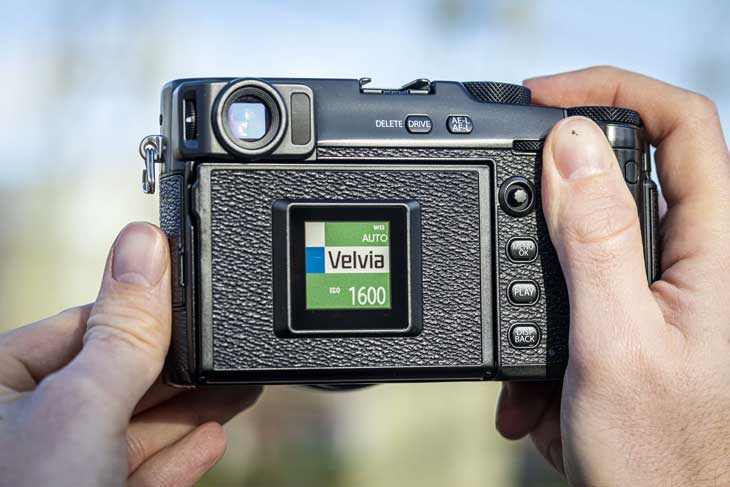
According to the latest coming from the Fuji rumor mill, the Fuji X-Pro3 successor, which might be called the Fuji X-Pro 5 or the Fuji X-Pro 6 depending upon the time of its arrival and siblings’ name at that time, is delayed and one thing for sure no X-Pro 4 coming. Even the rumor mill is sure of one thing NO X-PRO series update will arrive in 2025, which is why it’s safe to say it may arrive in 2026.
So what’s the biggest reason that Fuji is continuously delaying the update of the Fuji X-Pro series camera? The marketing team has seen the sales numbers of the Fuji X-Pro3 camera, and due to the LOW VOLUME of purchases made compared to the previous two versions of the camera, the series has been delayed for further updates.
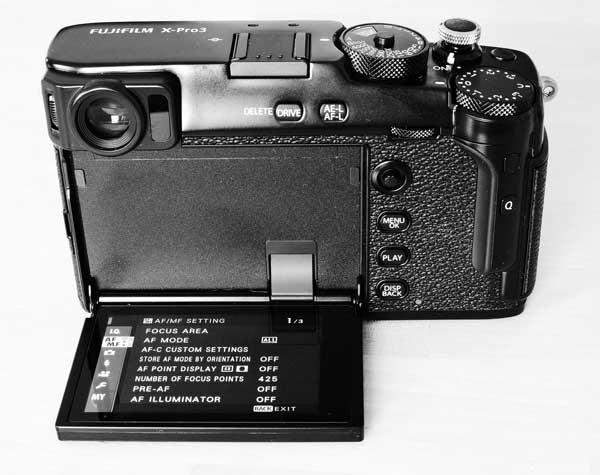
And what’s the biggest reason behind the low sales numbers of the X-Pro3? It was the display screen. They have created a unique kind of display screen, which was good for nothing, and if you want to see the actual display of the camera, you have to go through a very hard way. The display was not properly tilting in the backward direction of the camera, so it was kind of an entire design blunder. They were trying to make a kind of Leica M11 series or what we don’t know at this moment, but the existing user base of the X-Pro series camera was not that happy. Even at the time of the announcement, I have posted the comments I have received, and the feedback that I received at that moment mostly suggested that better to invest in the X-T series rather than getting this camera with this weird type of display.
Fuji must learn from their past mistakes. Whenever they want to announce the X-Pro series, it’s completely good; it depends upon their own marketing team’s decision and whatever future strategies they have—it’s all okay. But they should at least include a good fixed display screen in their camera, or even if they want to add a very handy tilting display, it’s most welcome. They should keep it as simple as possible for photographers.
Fuji X-E5 Camera Announcement on or Before August 2025
Follow us on our social pages FACEBOOK | TWITTER | INSTAGRAM, –> See More Fuji Rumors
source Fujirumor.com
By admin, on December 1st, 2024
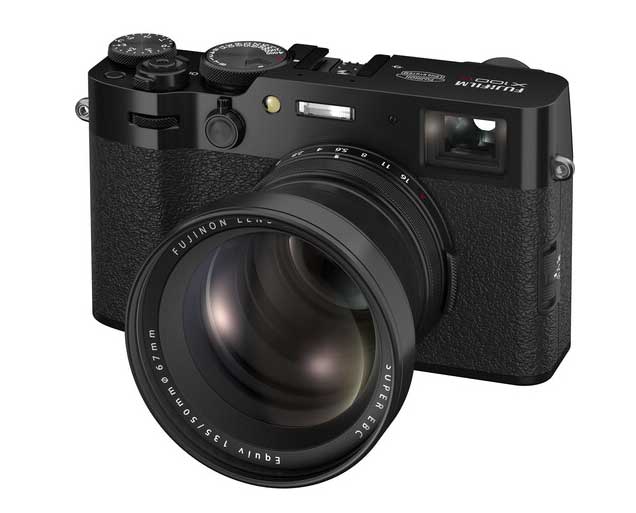
After the phenomenal success of the Fuji X100 VI series cameras, Fuji will soon release a medium-format compact camera. The name of the upcoming Fuji Medium format compact camera Fuji is about to announce its medium format compact camera soon, so this will be the world’s first medium format compact camera ever announced by a camera maker.
Rumored Specs and Details of Fujifilm GFX100RF
- Camera Name: Fujifilm GFX100RF.
- Sensor: 100MP medium format sensor.
- Lens: Fixed GF35mm F4 lens (28mm equivalent in full-frame terms).
- Size: Compact for a medium-format camera, almost the size of the Fujifilm X-Pro3.
- No IBIS: Lack of in-body image stabilization to maintain compact size.
- Aperture Depth of Field: F3.2 equivalent depth of field in full-frame terms (actual aperture is F4 for the GFX sensor).
- Design Philosophy: Retro style and compact as loved by Fuji users
Arrival Date of the GFX100RF Camera
Expected in March 2025 (announcement or shipping date not confirmed).
One thing is for sure, Fuji is pushing the limits, and we should appreciate the effort made by them.
Stay tuned; we will post more updates as they become available to us!
Also, look at – Fuji Cinema Camera A Closer Look
Follow us on our social pages FACEBOOK | TWITTER | INSTAGRAM, –> See More Fuji Rumors Or subscribe to us via Email
source – Fujirumors
By admin, on November 13th, 2024
Fuji FIRST Cinema Camera A Closer Look, Fuji finally showcased the FUJIFILM GFX ETERNA, a camera for professional cinematography and short film makers production, the camera is being displayed at the Fujifilm booth (booth number 7204) and INTER BEE CINEMA (Hall 3) on the first day of Inter BEE 2024 (Japan). We will bring more updates to you very soon
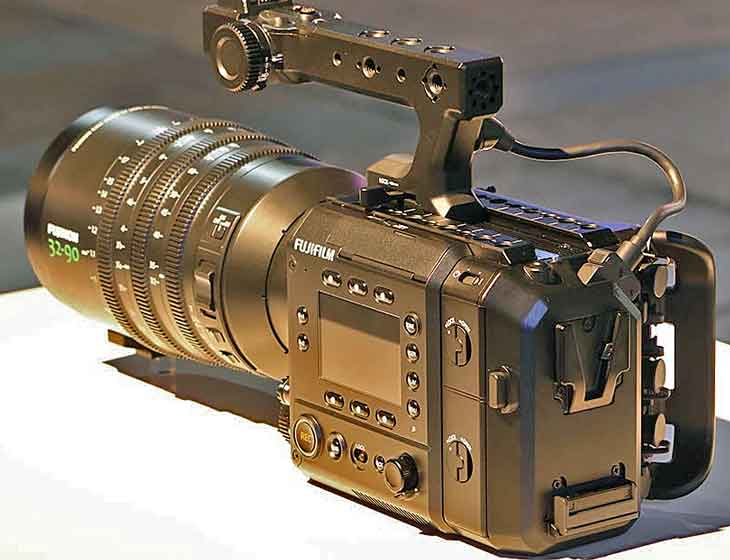
The Fuji Cinema camera uses the 102MP GFX CMOS II HS sensor, previously seen in the GFX 100S II and GFX 100. With this sensor, the new cinema camera is able to produce oversampled 4K, 6K, and 8K recordings that will capture stunning detail, ideal for high-end productions. The sensor also supports Multi-Aspect ratio recording, so for professionals it will become super easy to select their recording style in a single click with the best sensor available in the industry.
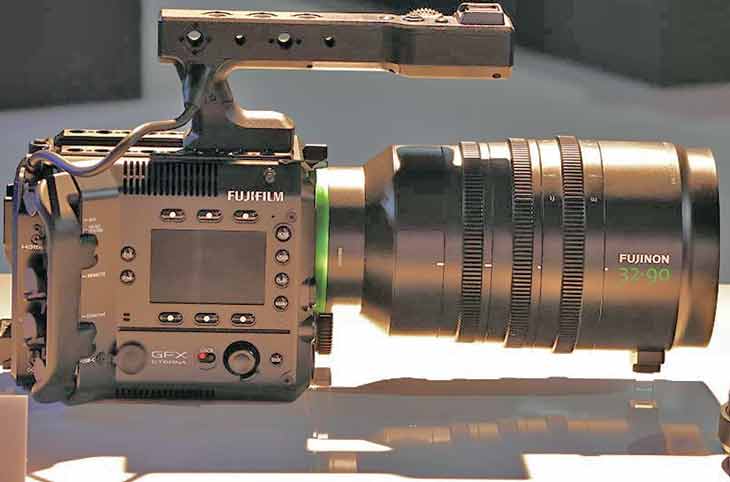
A G-to-PL mount adapter is also in development, opening compatibility with PL-mount lenses—the industry standard for cinema work.
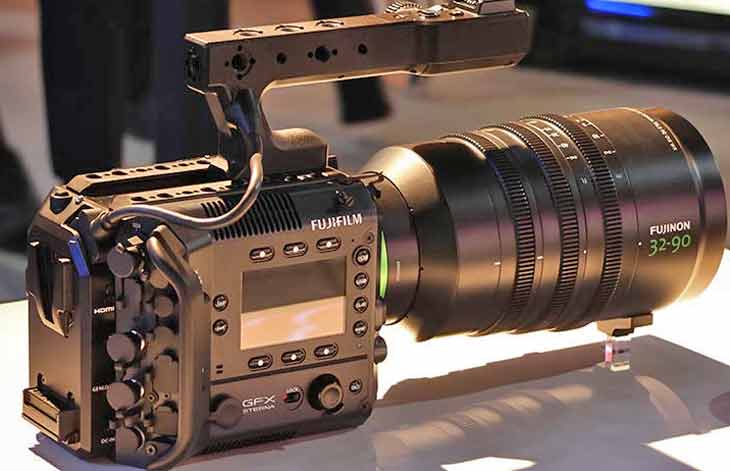
A new series of power zoom GF lens coming, and one of them is the 32-90mm focal length lens, dedicated to the GFX mount, which should offer filmmakers flexibility across wide to mid-telephoto ranges and offers fulltime AF support as well as optical image stabilization. A perfect camera for single-handed shooting.
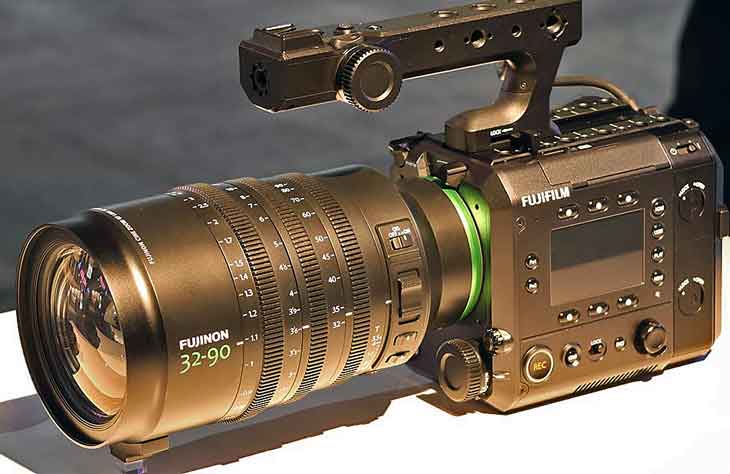
Release Date: Set to launch sometime in 2025, this camera represents Fujifilm’s dedication to evolving video production tools for professional filmmakers.
Follow us on our social pages FACEBOOK | TWITTER | INSTAGRAM, –> See More Fuji Rumors Or subscribe to us via Email
By admin, on October 15th, 2024
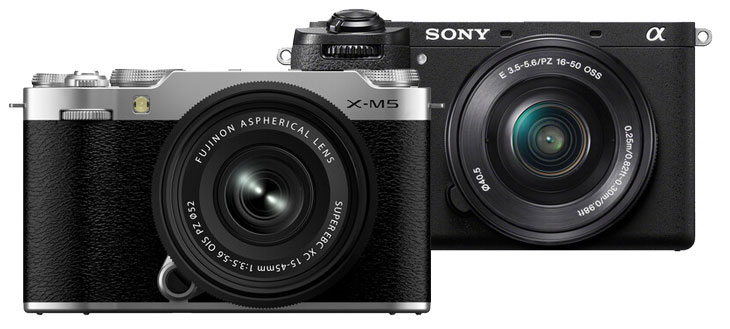
Let’s compare the Fuji X-M5 versus the Sony A6700 camera. We have compared the photographic & videography features in a separate table, so you can easily understand which camera is best for you.
If you are a photographer, which camera should you buy? Again, if you are a content creator, videographer, or wedding filmmaker, which camera should you choose?
Take a look at the specification comparison table below, where we have highlighted the major differences between the two cameras. They also have some similarities, but the good thing is that the Fuji X-M5 camera is able not only to compete but also to uplift the competition bar by upscaling the core specifications.
Fuji X-M5 vs Sony A6700 – 15 Major Differences for Photographers
| Feature |
Fuji X-M5 |
Sony A6700 |
| Sensor Resolution |
26.1 MP APS-C CMOS |
26 MP APS-C Exmor R BSI CMOS |
| Image Processor |
X-Processor 5 |
BIONZ XR |
| ISO Range (Photography) |
160 to 12,800 (Extended: 80 to 51,200) |
100 to 32,000 (Extended: 50 to 102,400) |
| Autofocus Points (Photo) |
425 Phase Detection Points |
759 Phase Detection Points |
| Autofocus Sensitivity |
-7 EV |
-3 EV |
| Continuous Shooting |
Up to 30 fps (Electronic, cropped) |
Up to 11 fps (Mechanical & Electronic) |
| Viewfinder |
No Viewfinder |
2.36M-dot OLED Viewfinder |
| Shutter Speed (Mechanical) |
1/4000 to 30 seconds |
1/8000 to 30 seconds |
| Mechanical Shutter |
Yes |
Yes |
| Image Stabilization |
NA |
5-Axis In-Body Image Stabilization (IBIS) |
| Sensor Type |
Standard CMOS |
Backside Illuminated (BSI) CMOS |
| Weather Sealing |
Yes (Dust & Water Resistant) |
Yes (Dust & Moisture Resistant) |
| Battery Life (Stills) |
Approx. 460 shots |
Approx. 570 shots |
| Weight |
355g (Body Only) |
493g (Body Only) |
| Memory Card Slot |
Single SD UHS-I Slot |
Single SD UHS-II Slot + CFexpress Type A |
Quick Analysis of Specification Differences between the two
The core specifications of the Fuji X-M5 camera look very impressive when compared with the Sony A6700 camera.
If you are a photographer, then of course you will miss the sensor-shift image stabilization in the Fuji X-M5, which is present in the Sony A6700.
Having image stabilization in your camera is really important if you shoot images in low-light environments. The image sensor compensates for hand movements even when you are using a slow shutter speed, resulting in neat and clean images.
Another feature that will help the Sony A6700 camera is the high ISO range, which is expandable from 50 up to 102400.
But wait, we still have some significant differences that might affect your choice. Another big difference for photographers to consider is the continuous shooting speed. If you don’t want any rolling shutter effect visible in your images, you have to use the mechanical shutter, as the electronic shutter can cause rolling shutter effects, especially with non-stacked sensors.
Autofocus Sensitivity and Tracking
Finally, let’s talk about the autofocusing systems of both cameras. We have seen the autofocus sensitivity difference between the two. If you compare them, the Fuji X-M5 camera looks very impressive with -7 EV autofocus sensitivity against the A6700 camera, which has -3 EV autofocus sensitivity. But this autofocus sensitivity only works once to acquire the autofocus point in extremely low-light situations.
Now, let’s consider a situation where quick moment-to-moment focus is needed. In this case, the Fuji X-M5 may focus more quickly compared to the A6700, due to its AF sensitivity. However, when we talk about autofocus tracking performance, due to the higher number of phase-detect autofocus points present in the Sony sensor—approximately 759 compared to Fuji’s 425—the tracking performance of the Sony A6700 sensor will be better than the X-M5.
So, we have two differences here. First, autofocus acquisition is better in the Fuji, but at the same time, the autofocus tracking performance is better in the Sony. Generally, most autofocus modes rely on the tracking performance of the camera, not on the acquisition part, so I would give a slight advantage to Sony in terms of tracking performance.
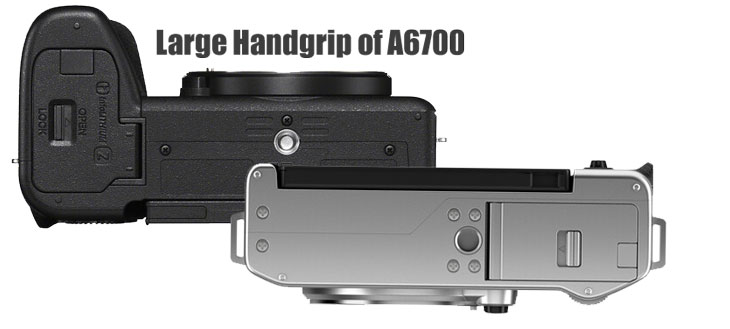
Design and Battery Life
Finally, let’s talk about the design part of both cameras. The Sony A6700 camera hand grip is deeper and much better compared to the Fuji X-M5. At the same time, we have a dedicated OLED viewfinder in the body of the Sony A6700 camera, which helps photographers who are used to using optical viewfinders from DSLRs. So, more or less, if we talk about ease of use and digital body design, the A6700 camera is more user-friendly.
At the same time, if we talk about battery backup, the Sony offers a bigger battery, resulting in more shots per charge—approximately 570+, whereas in Fuji, you are getting around 460. So yes, we do have some differences.
Conclusion: The best camera for photographer
should you go with the Fuji X-M5 or the Sony A6700? We get some extra features from inside to out with the Sony A6700 camera. Have a look:
The positive features of the Sony A6700 include the presence of a sensor-shift image stabilization system, which helps capture clear images in low-light environments. At the same time, the wide ISO range, starting from 50, is completely absent in the Fuji X-M5. Additionally, the A6700 offers a bigger battery life, which makes it a better option for professional photographers.
Not only that, but we also have a very large range of E-mount lenses from Sigma, Tamron, and many other brands. Although the Fuji X-mount is also open, it is not as big or broad as the E-mount at the moment, even though there are many options in X-mount.
Compared to the X-M5, we do see some advantages like autofocus sensitivity and continuous shooting speed. So, if you really want a camera with fast continuous shooting speed and don’t care much about the ISO range, image stabilization system, battery grip, or battery life, then the X-M5 might be a good option. However, for a photographer, we highly recommend the Sony A6700.
Fuji X-M5 vs Sony A6700 – 15 Major Video-Related Differences
| Feature |
Fuji X-M5 |
Sony A6700 |
| MAX Video Resolution |
6.2K up to 30 fps |
4K up to 120 fps |
| Slow-Motion Video |
1080p at 240 fps |
4K at 120 fps, FHD at 240 fps |
| Video Codec |
H.264/H.265 (HEVC) |
H.264/H.265 (HEVC), XAVC S-I |
| Video Bitrate |
400 Mb/s |
600 Mb/s |
| Video Recording Limit |
50 minutes in 4K |
No Recording Limit |
| Log Profiles |
F-Log, F-Log 2 |
S-Log 3, S-Cinetone |
| Autofocus Points (Video) |
425 Phase Detection Points |
759 Phase Detection Points |
| Autofocus Features |
Face/Eye Detection |
Real-time Tracking, Eye AF for Video, AI framing |
| External Recording |
4:2:2 10-bit via HDMI |
4:2:2 10-bit via HDMI |
| Viewfinder for Video |
No EVF |
Yes, 2.36M-dot OLED Viewfinder |
| Display Type |
3-Way Tilting LCD |
Fully Articulating LCD |
| Video Stabilization |
Electronic |
5-Axis IBIS + Active Mode for Video + Gyro |
| Audio Inputs |
3.5mm Mic Jack, 3.5mm Headphone Jack |
3.5mm Mic Jack, 3.5mm Headphone Jack |
| Mobile Streaming |
No |
Yes (IP Streaming 4K) |
video core specifications
Let’s compare the video core specifications between the Fuji X-M5 and the Sony A6700 cameras.
We have an open gate option in the Fuji X-M5, which videographers will love, especially for professional filmmaking, allowing them to decide the format and ratio for an entire scene. It’s better to record in open gate. In addition, we have options like Full HD mode at 240 frames per second for capturing slow-motion videos.
However, if you compare the X-M5’s features against the Sony A6700, you will miss the higher-resolution open gate mode. But aside from that, the Sony A6700 offers 4K @ 120 frames per second and can also record Full HD videos at 240 frames per second. The bitrate is approximately 600 Mbps, which is better than the X-M5’s 400 Mbps, even though Fuji offers a 6.2K open gate recording option.
A higher bitrate means more color information, and this will definitely help Sony users a bit more. In addition, we have a dedicated AI chip in the Sony A6700, which enhances autofocus tracking performance in video mode, including AI-based auto framing.
The good news is that Fuji is also improving their autofocus modes in the new X-M5 camera. Similar to Sony, they have introduced a product feature mode in the X-M5, showing Fuji is slowly trying to compete with Sony’s features in the A6700 camera.
Aside from all these features, the Sony A6700 has a 2.36-million-dot electronic viewfinder, which may not directly help with filmmaking, but is still a useful feature. However, the biggest factor is the presence of a sensor-shift image stabilization system.
With sensor-shift image stabilization, we can use active mode in video on the Sony camera to achieve smooth and stable footage. Sony also offers a gyro-based image stabilization system, which can smooth out footage like a GoPro when processed with special software.
Conclusion – Best Camera for Video
When you compare all these features, the Sony A6700 looks more appealing. However, if you are a Filmmakers (Independent or Short Films) prefer the open-gate recording format, you can go with the Fuji X-M5. But if you’re asking which one is more usable and practical camera, for
- For Wedding Cinematographers
- For Traditional Videographers (Corporate, Documentaries):
- For Content Creators
The Sony A6700 is more usable, with its 4K 120 FPS mode, advanced autofocus tracking with a dedicated AI chip, and hybrid image stabilization, which is the better option. The Sony A6700 simply offers a more advanced set of features.
Final Recommendations:
- Fuji X-M5 is recommended for filmmakers who need open gate recording and prefer high-resolution control.
- Sony A6700 is a all-in-one all-rounder for content creators, wedding cinematographers, and traditional videographers, features advanced autofocus, 4K 120 FPS, and Excellent stabilization features.
Fuji X-M5 Price
Fujifilm X-M5 Body: £799 / €899- B&H Store
Fujifilm X-M5 + XC 15-45 Kit: £899 / €999 – B&H Store
Sony A6700 Price
Sony A6700 Body: $1398 B&H Store | Amazon.com
Sony A6700 with Kit Lens: $1498 – B&H Store and Amazon.com
Support us – Use or affiliate link Amazon.com | B&H Store for the next purchase u make – it helps us
|
KEEP THIS BLOG ALIVE - Support New Camera Buy Canon Lenses, Buy Music CD or Digital Camera at amazon it helps this site, and you do not pay anything extra, it is just a way to help support this site.

|

















